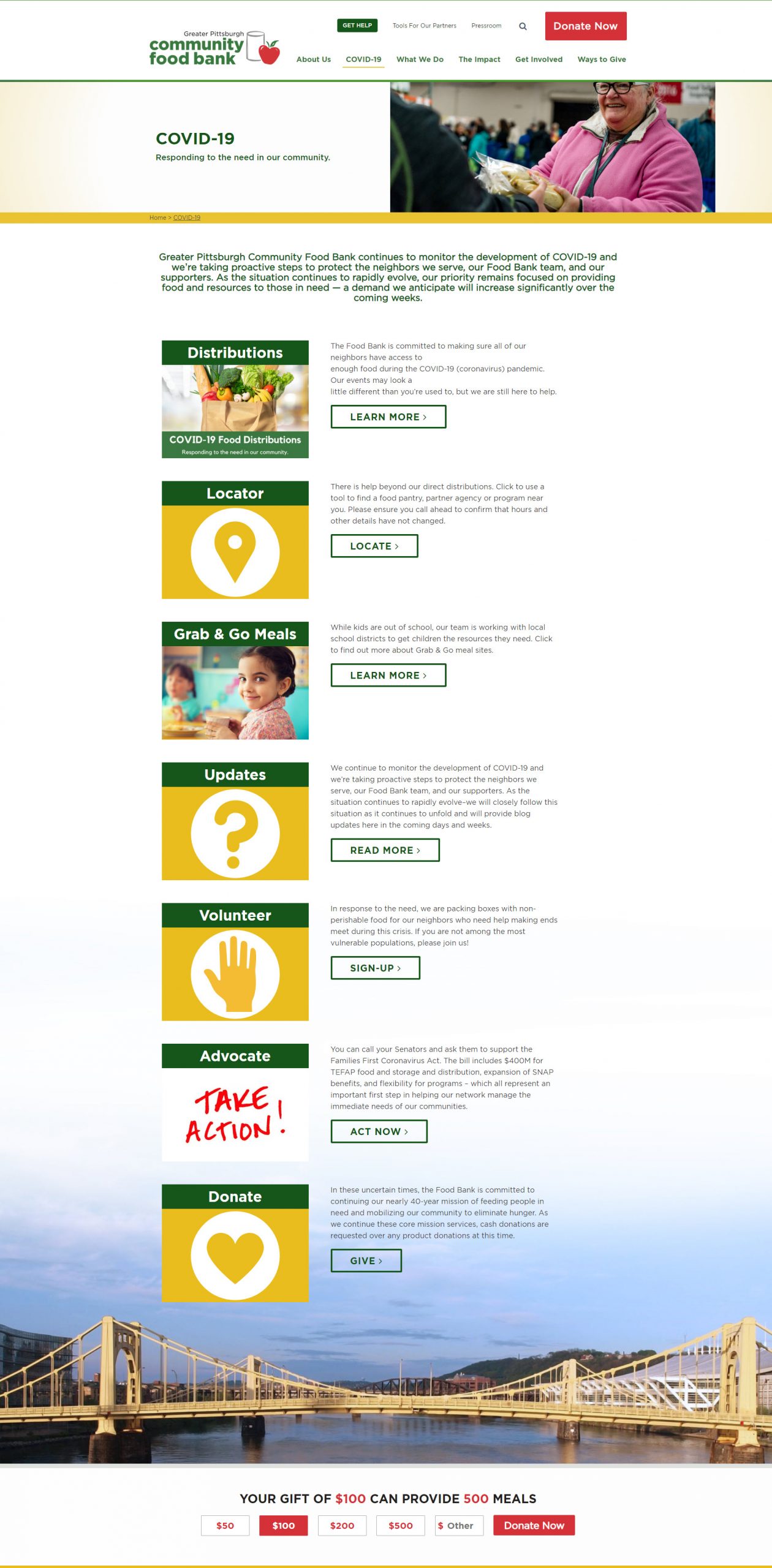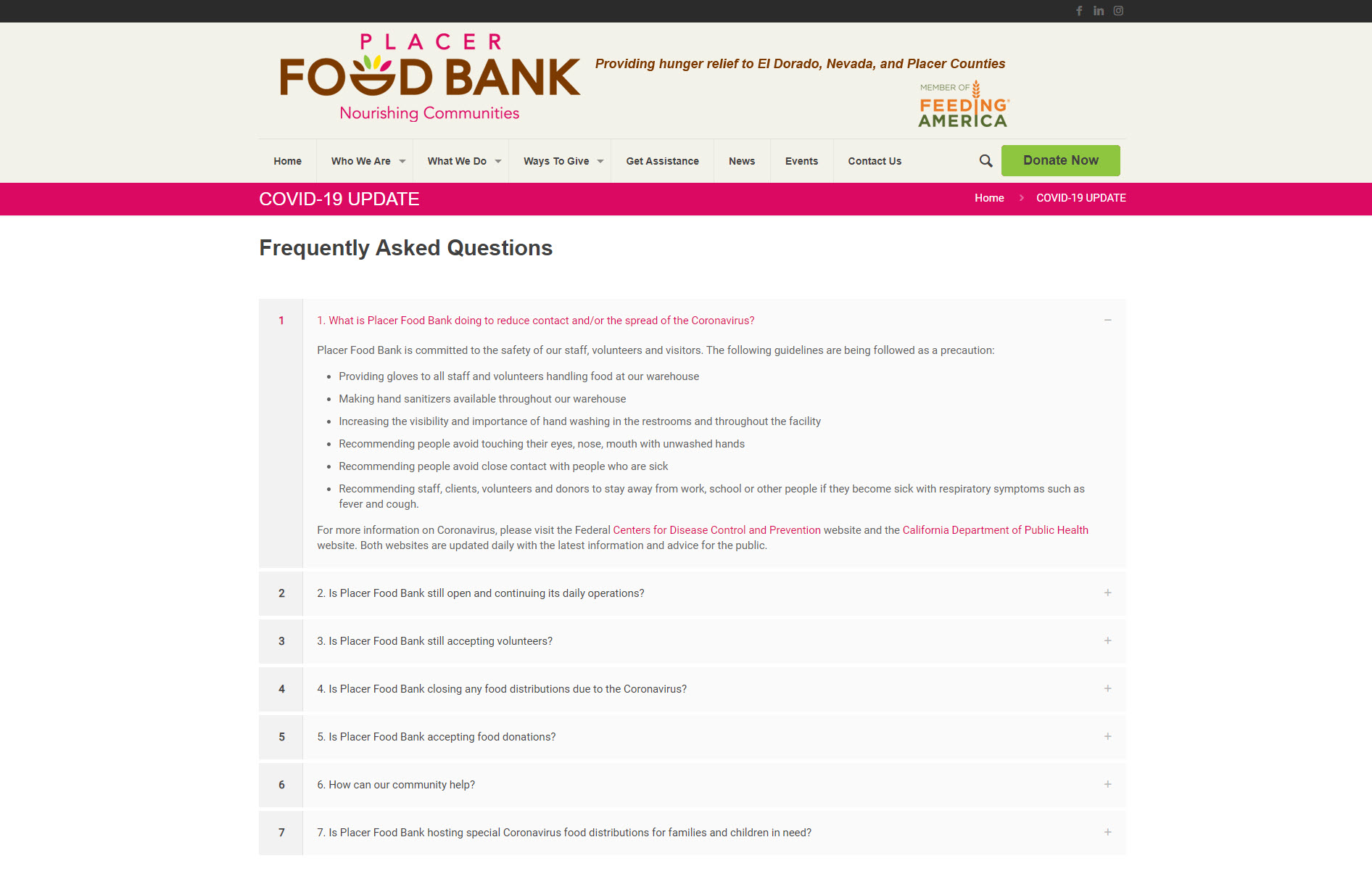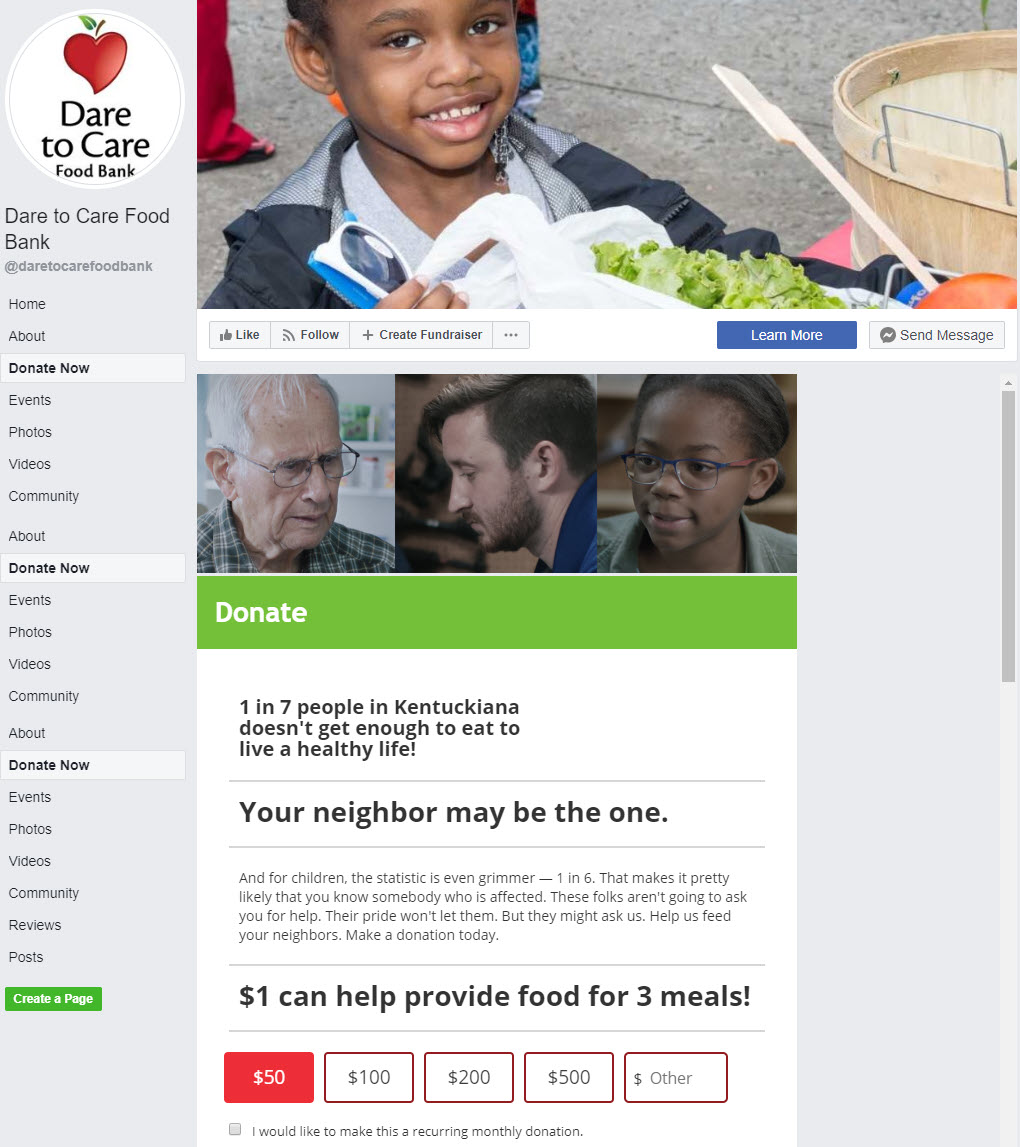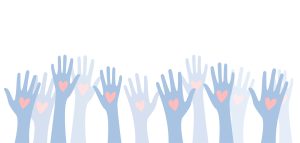If you’ve been grocery shopping since the coronavirus was updated to a global pandemic, you’ve likely noticed it’s harder to find staple foods, toiletries, and baby formula. Supply shortages are frustrating for your average person, but for those already facing food insecurity without a global pandemic, the situation is more dire. To combat food insecurity in the wake of the coronavirus, these food banks are implementing fundraising strategies that are helping them provide food to those in need. If you’re a nonprofit operating to help people negatively impacted by COVID-19, emulate these best practices to find success even in the middle of the outbreak.
Lakeview Pantry
Lakeview Pantry makes it clear when you visit their website that they’re still open and distributing food to those who need it despite the coronavirus outbreak. They also make it clear that they need support from donors to continue providing services during this crisis.
They shared their coronavirus preparedness strategy (and linked to a dedicated information page) on the banner of their website’s homepage, and also created a COVID-19-specific donation form to raise funds and stay open and serving the community.

Their COVID-19 form succeeds by sharing why they need more help than normal (increased food insecurity as a result of the outbreak) and what supporting them achieves. Lakeview Pantry gives donors the option to give through Qgiv or PayPal on the same form and donors can choose from different giving amounts or specify their own donation amount. They’ve also included Double the Donation’s matching gift widget so donors can see if their employer will match their gift to increase impact.
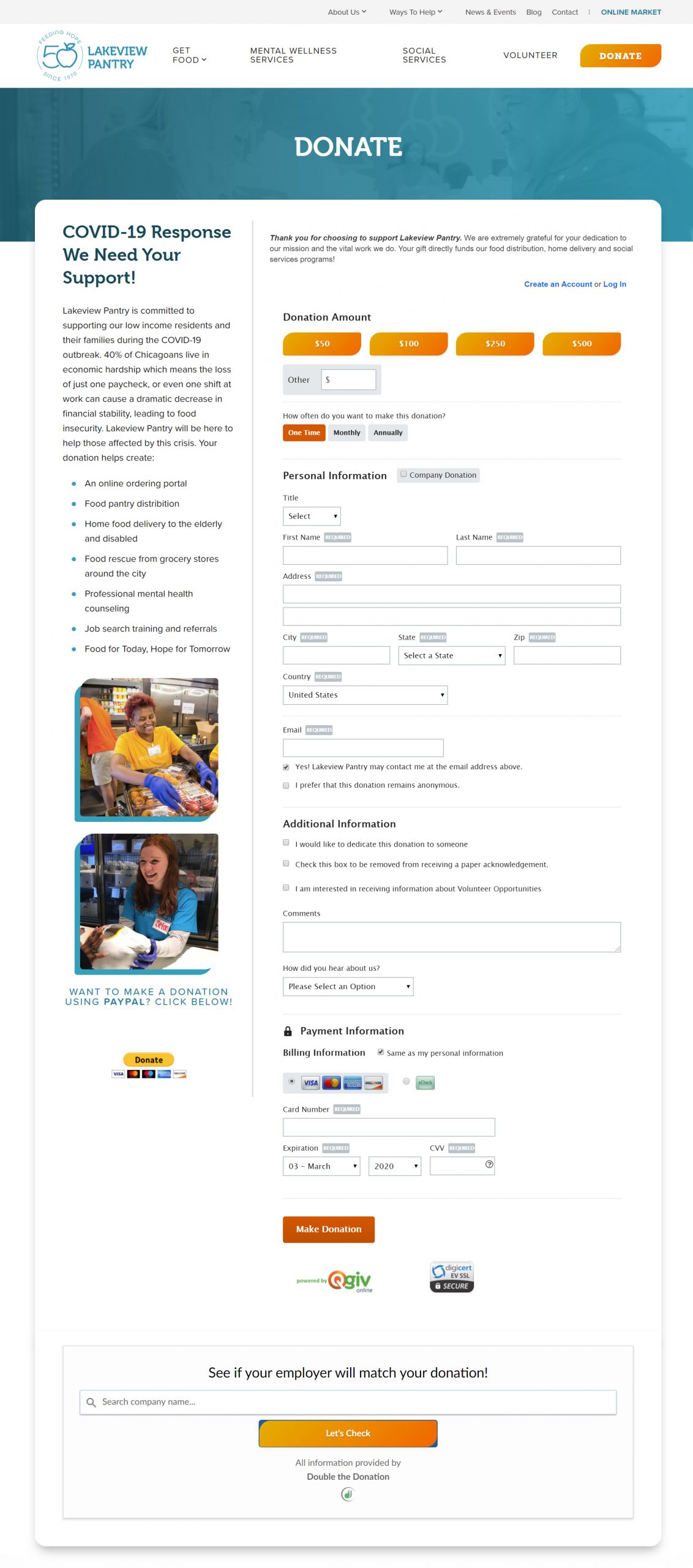
Manna Food Center
Manna Food Center makes it clear the moment you land on their website that they need help responding to food scarcity caused by COVID-19. A popup appears with a special notice encouraging visitors to their website to make a difference by going to their COVID-19 giving form.
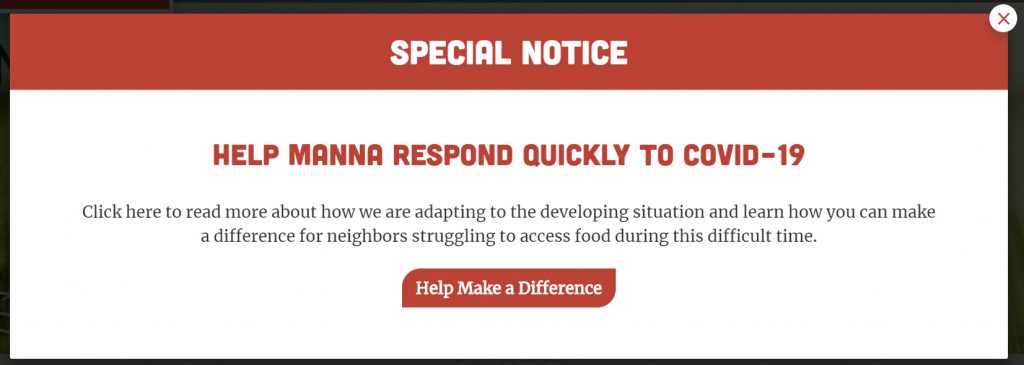
Manna Food Center has also taken their request for support to social media. They created a social appeal with a photo of their food pantry shelves. Their food supply is almost completely depleted. Within the post itself, they link to their giving form and encourage their social media followers to give to ensure that no one in their community goes hungry during this difficult time.
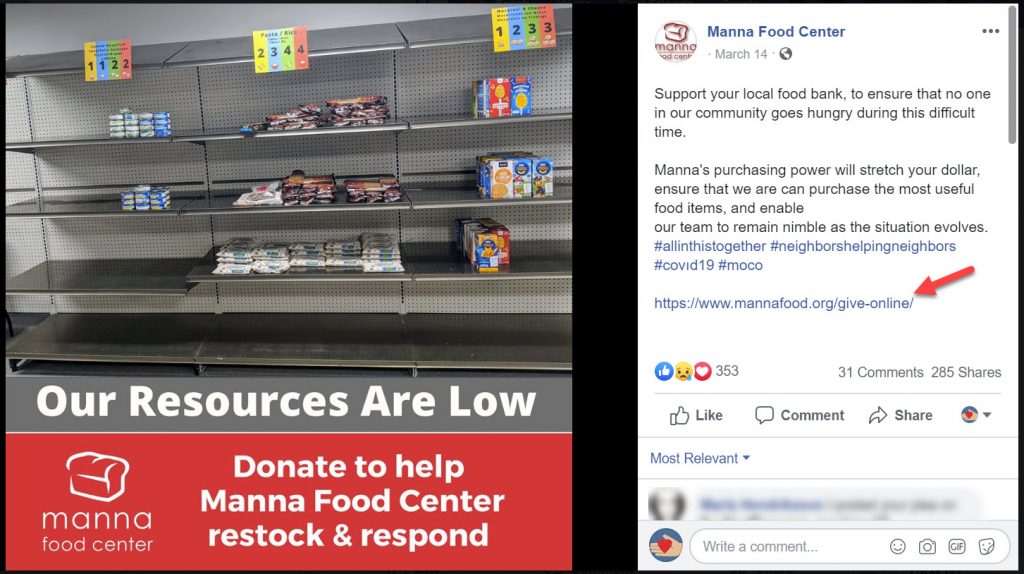
Manna’s COVID-19 giving form is the opposite of doom and gloom. They acknowledge the seriousness of coronavirus and the resulting food insecurity, but the header of the form assures visitors they are open and serving. They include a “Latest Updates” section on their form to share the latest developments. During the outbreak, they’ve waived income requirements so anyone facing hunger due to the outbreak is welcome to be served.
The form itself has set donation amounts with an impact statement beneath each one. Donating to Manna Food Center’s coronavirus form goes toward creating “Stay Put Packs.” These packs keep people safe at home while still having access to food.
They’ve also added trust indicators, like an icon linking to their Charity Navigator listing, below their form so donors know their money will be put to good use.

Greater Pittsburgh Community Food Bank
Greater Pittsburgh Community Food Bank made a point of preparing for a food shortage as a result of COVID-19. They created a message reassuring those in need that the food bank was there for them. The organization anticipated families with school-aged children, seniors with chronic medical conditions, and families facing unexpected job loss as a result of the outbreak would need support during this time. They targeted their messaging toward letting these members of their community know the food bank is there for them.
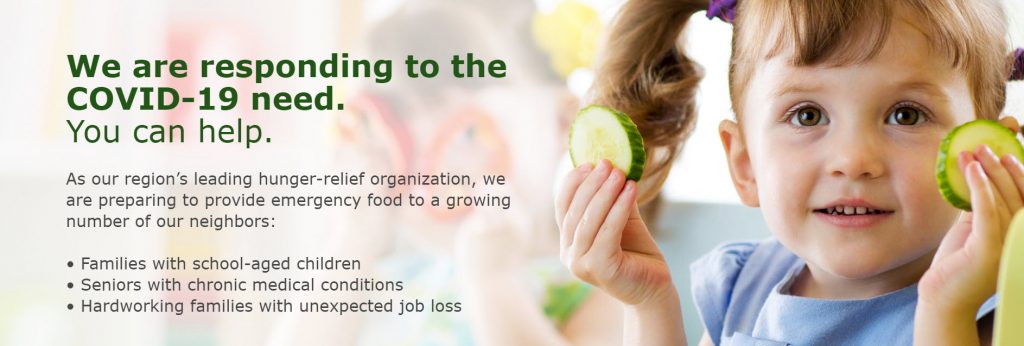
Their COVID-19 response was added to the navigation bar of their homepage.

Donors and beneficiaries can easily navigate to the COVID-19 page to learn how the food bank is responding to coronavirus.
Their webpage shares information on food distribution practices during the pandemic. They included a locate button to find food distribution centers to help people find food in their area. There’s also a section dedicated to their grab & go meals for their kids out of school program. Toward the bottom, they’ve included an updates section, a volunteer recruitment section, and a donate button. The button directs visitors to a COVID-19-specific giving form.
Placer Food Bank
The Placer Food Bank knew a large portion of their audience was likely to see their message on social channels, so they created a Facebook announcement. The announcement explained how they’re addressing the problem. They also provided the email addresses for their volunteer and agency relations programs to field any additional questions.
The post let food bank beneficieries know what the organization is doing to stay open and operate safely.
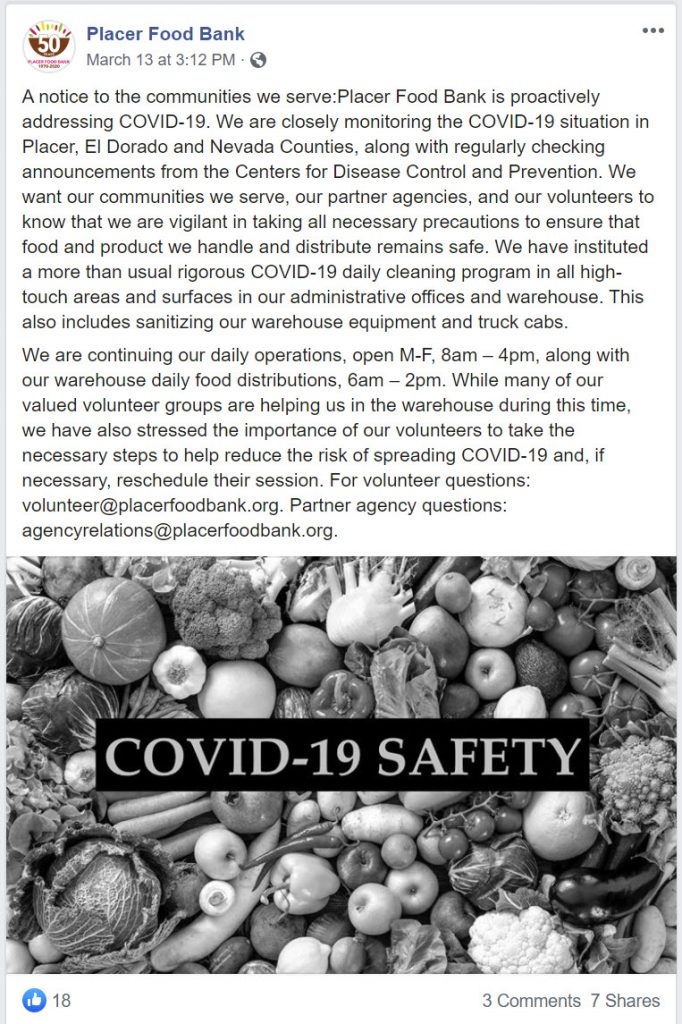
They also created a COVID-19 FAQ page to address common questions about what they’re doing in response to the pandemic.
The Placer Food Bank donation form doesn’t mention coronavirus but does default the fund to the area of greatest need. This gives them more flexibility to put funds to work now to keep the food pantry stocked and sanitized.
In addition, they’re using Qgiv’s GiftAssist feature to encourage donors to help cover processing costs. This reassures donors that more of their donation is going toward providing services in the community Placer Food Bank serves.

Dare to Care, Inc.
Like Lakeview Pantry, Dare to Care Food Bank added a COVID-19 header that directs visitors to their coronavirus response page. The page shares steps Dare to Care is taking to keep open and serving while keeping staff and beneficiaries safe.
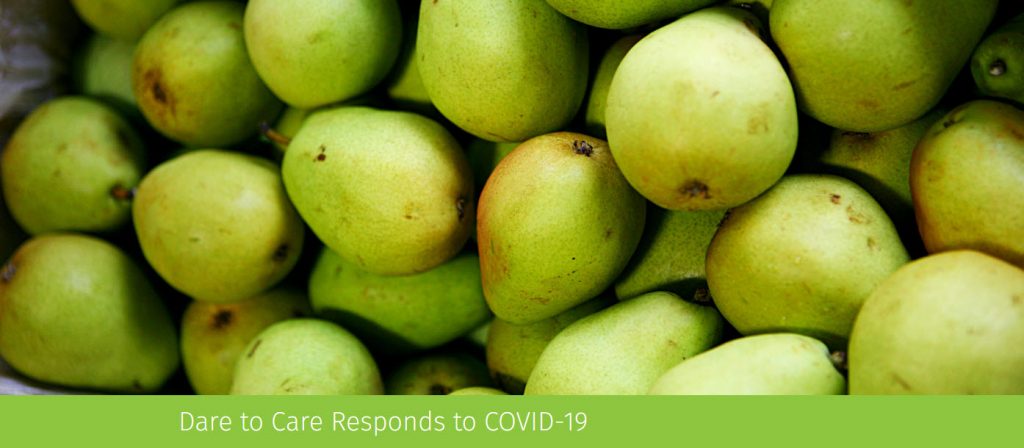
They broke their response page into different sections. Beneath the Updates and Information section, they have a section providing resources for people who need food during the outbreak. Beneath that is a section for those who want to donate or volunteer during the crisis. This section links to both a donation form and a volunteer sign-up form.
Finally, the bottom of the page shows the status of fundraising events that Dare to Care Food Bank was hosting. Some events were cancelled while others were postponed.
Like Placer Food Bank, Dare to Care also actively posts about their response to COVID-19 on their Facebook page.
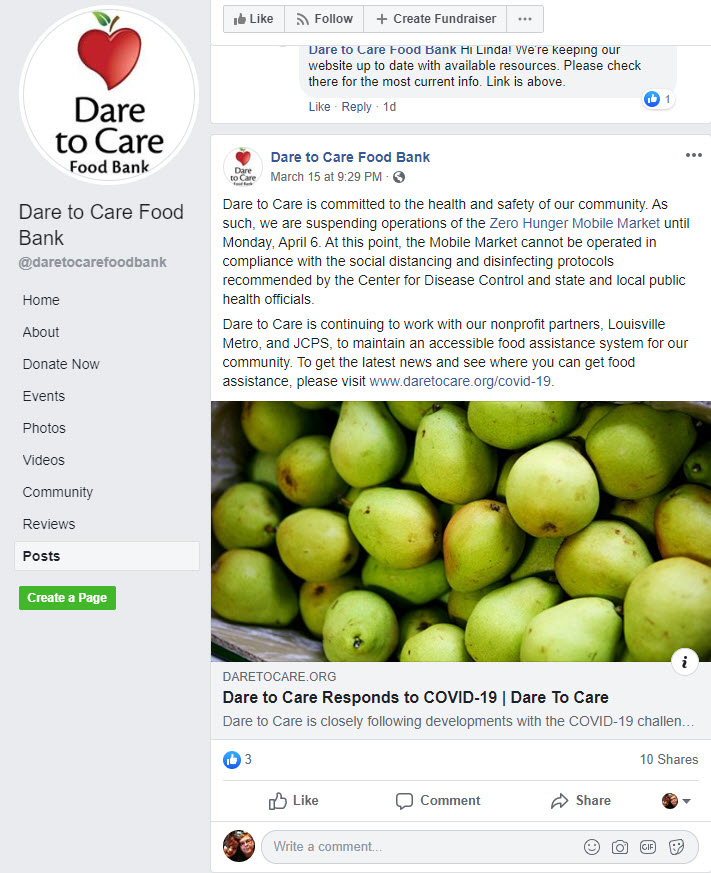
They’ve also set up a Qgiv donation form on Facebook for their followers to donate through.
Greater Spokane County Meals on Wheels
Another great COVID-19 response is the one created by Greater Spokane County Meals on Wheels. The organization dedicated its home page to its coronavirus response. They deliver meals to seniors. Because the population they serve is at greater risk, they’re taking extraordinary measures to limit exposure. This is evident by the graphic on the page discouraging handshakes.
Their response page talks at length about the steps taken to limit exposure. They closed their twelve Silver Café locations and are taking time to retrain volunteers on how to limit contact.
In addition to sharing what the organization is doing, they’ve linked to facts about coronavirus to help inform people. They also include a call for additional volunteers due to the increased need for home meal delivery.
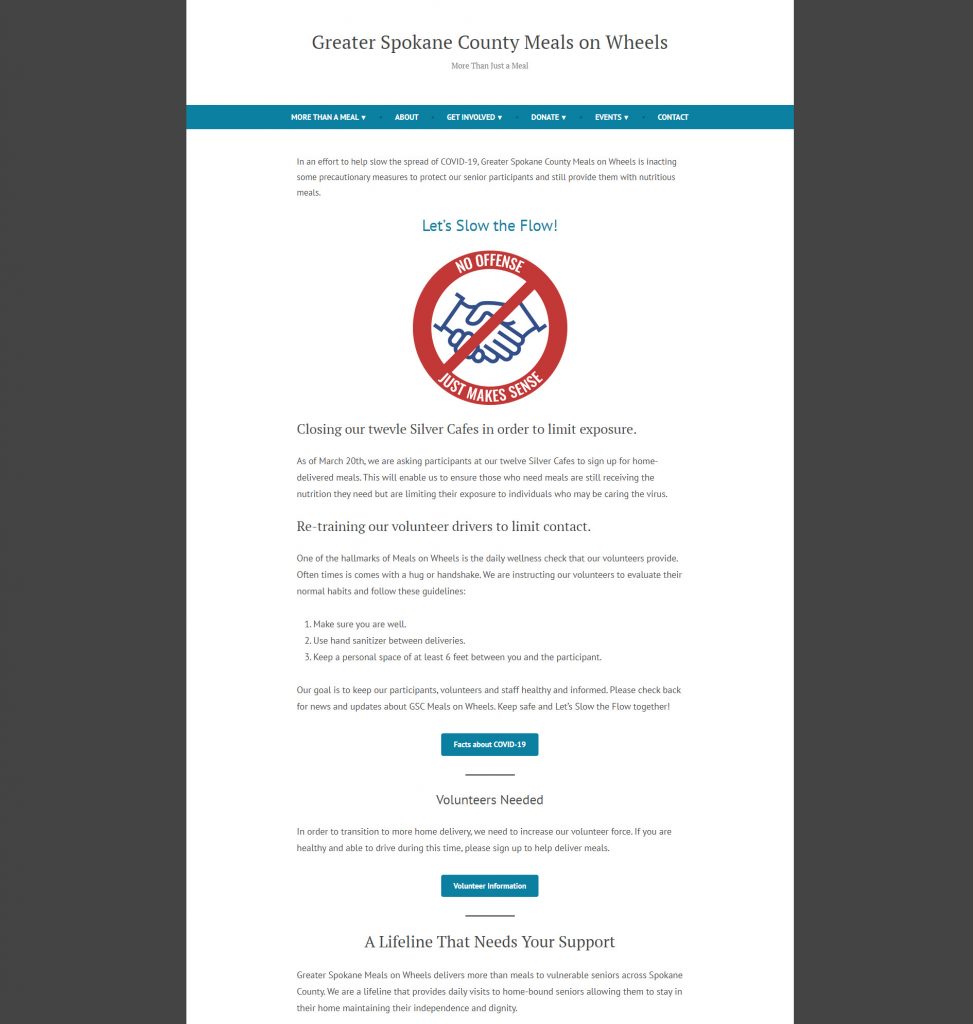
Second Harvest Food Bank of Northwest North Carolina
This last food bank is using Qgiv’s peer-to-peer store tool to ask site visitors to purchase food boxes for those in need because of COVID-19. Donors can choose to donate a box/backpack of food for families, senior, or children. The organization used simple graphics to describe the quantity of food purchased at each giving level. Independent of the store itself, there’s a button to make a donation to the organization in any amount.
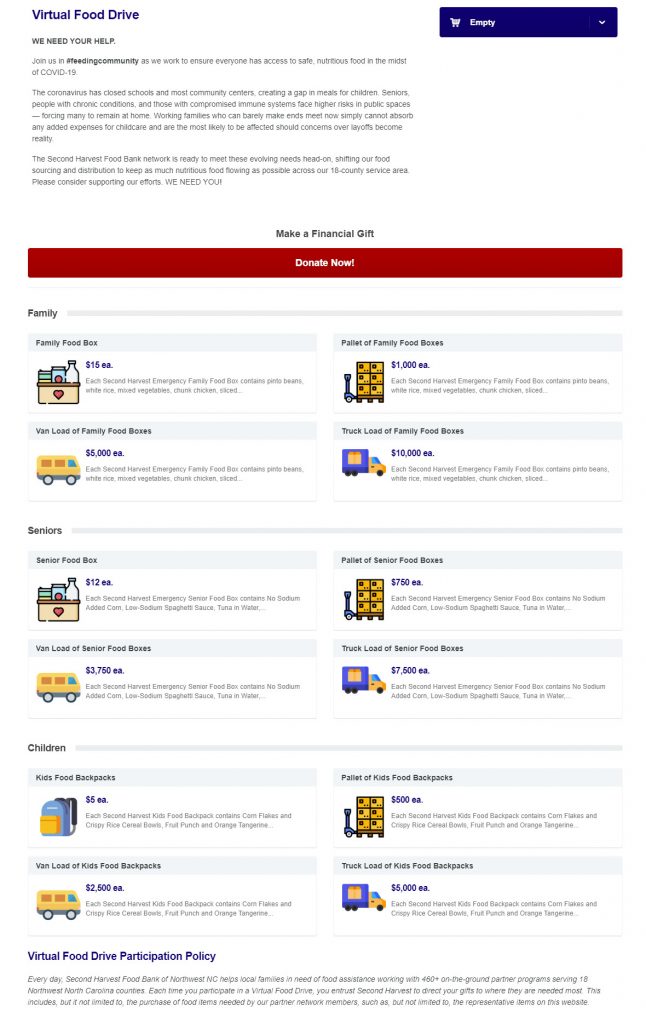
Their virtual food drive is simple to navigate while being an innovative way to accept donations to provide food for those facing COVID-19 food insecurity.
Conclusion
These five food banks have made a tremendous effort to safely remain open and stocked during the coronavirus outbreak. They’re convincing donors to contribute to their causes despite the fear of market volatility and food shortages. Despite having to cancel events and deal with shortages of food supplies, these five nonprofit food banks are willing the fight against food insecurity caused by coronavirus.
Need fundraising advice to help you stay fully functional during the outbreak? If you’re a current Qgiv client, reach out to support@qgiv.com to discuss how to use the tools you have to your advantage during this difficult time. If you’re not a Qgiv client and would like to learn more about using Qgiv’s tools, you can request a demo here!
For more resources about fundraising during an emergency, click here for a list of related resources.
Your fundraising needs are changing, and we’re here to support you during this difficult time. Many organizations are shifting their in-person events to virtual formats and utilizing mobile giving and text messaging to engage their donors. If you’d like to learn more about how Qgiv’s tools can help you continue to raise vital funds while keeping you and your donors safe, please contact us—we’re here to help.





